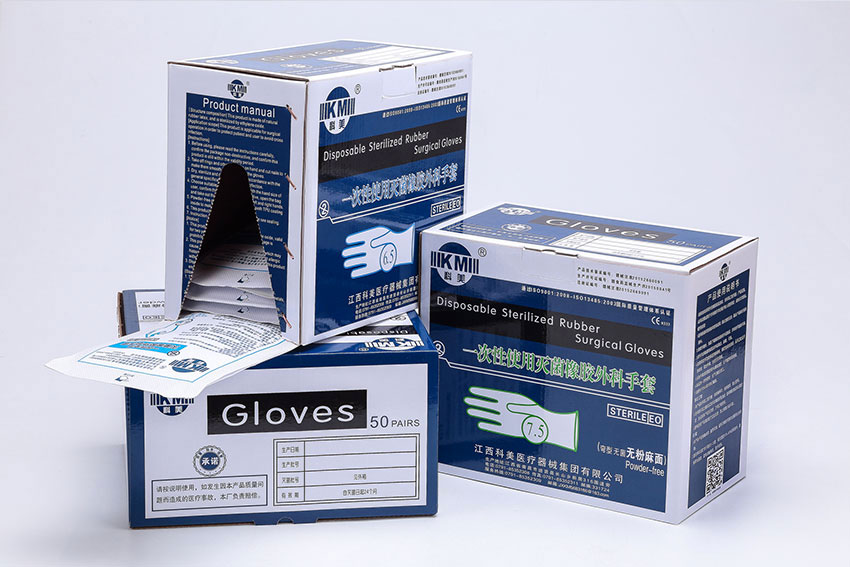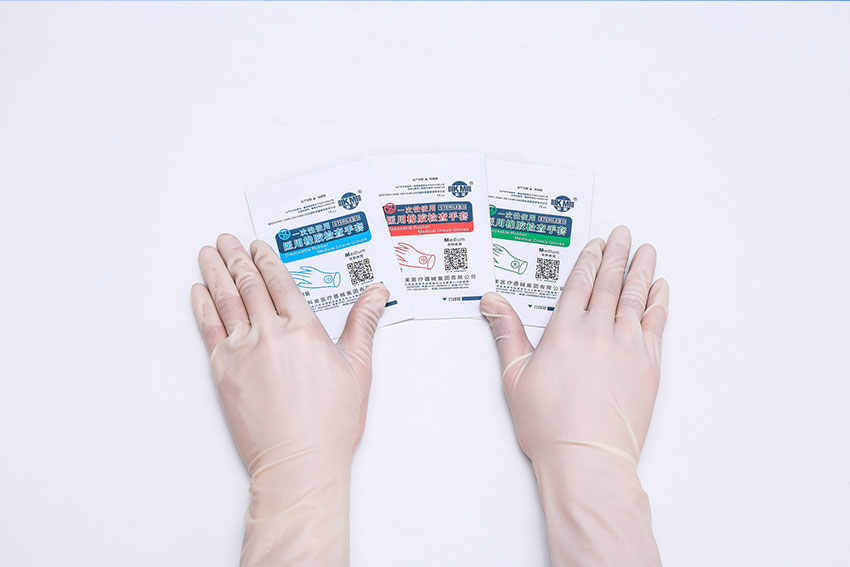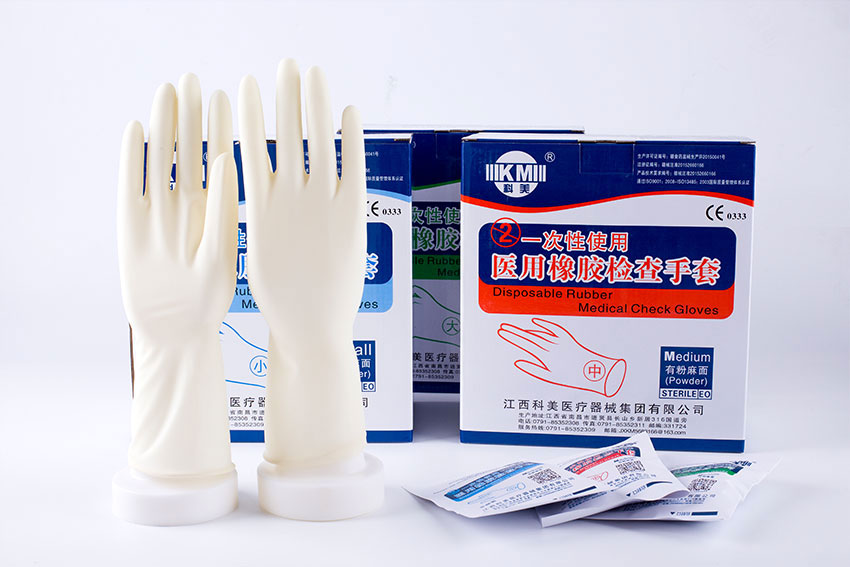Do you require disposable gloves to keep your hands clean and free of germs? In such case, you’ve arrived at the right place! In this shopping guide, we will discuss the many varieties of disposable gloves available on the market, as well as how to select the best ones for your specific needs.
You may believe that throwaway gloves require no consideration. Because they are intended to protect our hands, they may be required to meet specified requirements for thickness, finish, barrier protection, tensile strength, elasticity, and puncture resistance.
Choosing the most effective disposable glove is more challenging than selecting the least expensive choice. Material and quality of the gloves, as well as the tasks to be performed, comfort and fit, and price, must be considered.
What Is Disposable Gloves?
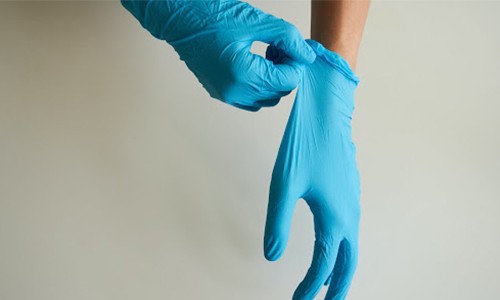
Disposable gloves are personal hygiene items that are designed to be thrown out after one use. They’re usually made from a single use plastic or paper material. They’re most commonly used for cleaning hands and for hygienic purposes, but they can also be used to protect surfaces from soil and other germs, and to perform many other tasks.
Furthermore, disposable gloves are very cheap, economical alternatives to other types of gloves, such as medical gloves (Knowledge: What Are The Types Of Gloves In Dentistry). They’re also disposable, which makes them perfect for situations where there is a risk of contamination, such as dealing with food, medical or hazardous materials, or any other situation where you’d prefer that no one touch the surface you’re working on.
Types of Disposable Gloves
There are different types of disposable gloves, but the most common ones that you’ll come across are:
Polyethylene PE Gloves
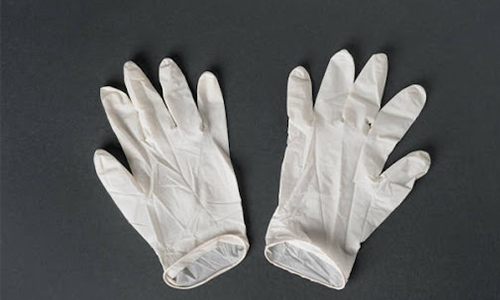
Polyethylene gloves are the most common type of disposable gloves. They’re very similar to latex gloves in purpose and use, but with a lot more plastic. They’re commonly used by plumbers, but can also be used for industrial use, medical procedures, and even for situations where there is a risk of contamination.
Latex Gloves

Latex gloves are used for a wide range of purposes and in a wide variety of situations. For example, some people wear them for certain medical procedures (such as eye exams, for instance) and to protect themselves from dangerous bacteria or excessive heat.
For the most part, latex gloves are the most popular type of gloves among professional workers, and can be found in areas that require the utmost in hygiene, such as healthcare and construction, OEM latex examination gloves could suit your hands as well
Neoprene Gloves
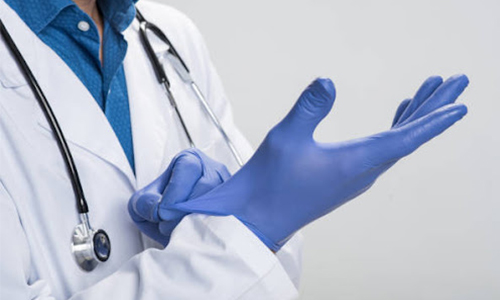
Neoprene gloves are made out of a synthetic rubber material, and are used for a wide range of applications, including things like hairdressing and gardening. These are perfect for more casual uses, such as cleaning, gardening, and for those who aren’t overly concerned about germs.
Vinyl Gloves
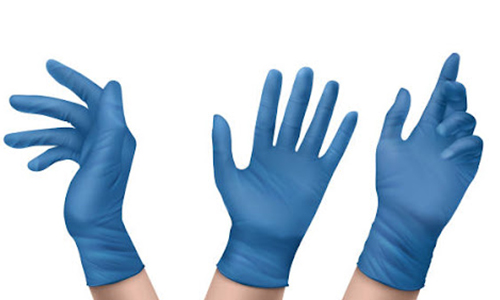
These are commonly produced by the same factories that manufacture plastic products, such as toys and clothing. In this case, the material itself is cheap, and the gloves are disposable, but unlike plastic, they can leave behind a sticky residue that’s difficult to remove.
Nitrile Gloves
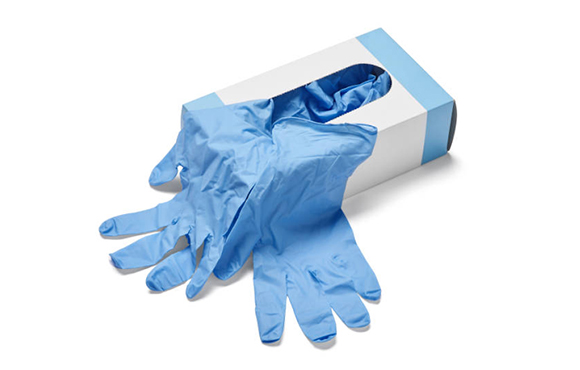
Nitrile gloves are similar to latex in purpose, plastic in appearance, and rubber in feel, but in this case, they’re made from a synthetic rubber material instead of natural latex. They’re commonly used for medical procedures, for hygienic reasons, or by those who aren’t afraid of germs.
What Are the Uses of Disposable Gloves?
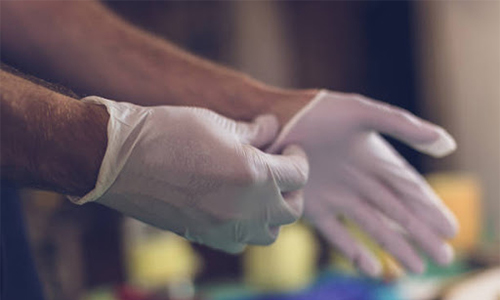
There are, of course, many uses for disposable gloves. Here are a few of the more common ones, but there are many more:
Operation Room
In operation rooms, the surgeon needs to be protected from germs that may be present on contaminated surgical instruments. The surgeon must also be protected from any objects such as staples that may be in a patient’s body.
By wearing disposable gloves, each surgeon will be protected from his own germs. Another advantage of disposable gloves is that the surgeon can throw them away after each operation, thereby keeping the operating room clean.
Drug Administration
The nurse has many tasks during drug administration, from drawing up the medication to giving the patient the medication, to moving the patient to the next room, and other tasks. She also has to wash her hands according to the manufacturer’s directions.
The uses of disposable gloves are covered with the medication distributing the medication evenly, and they provide a better chance of catching any germs that may be present.
Dental Hospital
The dentist does not want to become ill from the patients’ germs, so he wears disposable gloves. The gloves are also useful in a dental office when the dentist is doing a root canal. The root canal specialist uses a special toothbrush to clean the inside of the patient’s tooth.
The germ-laden toothbrush could contaminate the patient, even if the dentist wore a sterile coverall instead of a pair of gloves. In addition, the dentist wears medical goggles to prevent touching his eyes. The germs from the patient’s mouth could infect the dentist’s eyes.
Office of Medical Device Evaluation
The Office of Medical Device Evaluation wants to examine and review disposable medical devices to make sure they are safe and effective, and that they are not dangerous. The OME use disposable gloves to protect the workers from the germs that may be on the disposable medical devices. Any potential problems could be discovered by using sterile gloves, and the OME can correct any problems in a timely manner.
Infection Control
Infection control is a special type of care that protects people from getting sick by keeping germs out of the hospital and away from anyone who may be sick or have a disease. The uses of Disposable gloves are used in infection control.
The glove is designed to be sterile so that it cannot get germs on it. The glove is used to pick up hospital spills and items that may have been contaminated. The glove is also used to pick up other medical wastes that may be contaminated.
Gloves for Chemistry or Medical Lab
In chemistry and medical labs, germs from the outside may get on the gloves and put bacteria into the lab worker’s mouth or eyes. The germs from the outside may also contaminate equipment and tools.
The lab worker may touch a cotton swab with a dirty, contaminated glove, and contaminate it. On the other hand, if the glove is available, the lab worker can clean the cotton swab with the glove. The lab worker can also use the glove to pick up the right chemicals and other items that may be contaminated.
Caregiving
Caregivers need to perform a variety of tasks in the home, from bathing and feeding the child to changing diapers. If the caregiver wears a pair of disposable gloves, she won’t have to worry about germs from the outside of the child’s body getting on her. When she changes a diaper, she can put a clean, sterile wipe on the child’s bottom to cleanse it.
Beauty, and Tattoo Services
The beauty industry uses disposable gloves to protect worker from touching dirty equipment and other items. The worker can use gloves to clean the dirty equipment and other items. Wearing disposable gloves allows the worker to go to the bathroom without touching the dirty items on the way.
The skin oils on the worker’s hands can contaminate the equipment and tools. The tattoo artist also uses disposable gloves to protect the tattoo artist’s hands from contaminated ink and other materials.
Janitorial Work & Dishwashing
Laundry workers use disposable gloves to protect themselves from getting sick from the germs on the clothes that they wash. The same type of protection is also necessary when working around the kitchen and the bathroom. It is also necessary around the pet area. Each of these areas may contain bacteria that can make the worker sick.
The work area may be contaminated with bacteria from the outside, and the worker may bring germs on her hands into the kitchen or bathroom. The worker may also contaminate the equipment and tools.
Cooking & Food Prep
Cooking, in general, is dirty and difficult work. In fact, many medical wholesale glove conditions are associated with certain types of foods. Cooking and preparing food, in general, can cause the cook to become sick. It may be necessary for the cook to wash her hands before touching food.
They can use disposable gloves to protect their hands. When preparing food, the cook can use gloves to clean the food and utensils before putting them into the cooking pot.
Plating
Metals with excellent electrical conductivity Copper and aluminum are efficient conductors of heat, thus they heat up rapidly. Utilize thermal protective gloves when working close to heat sources with metals to prevent burns.
Security Work
Security guards especially those who work for hospitals, are often in contact with people who are sick. The guards must take precautions when handling sick people. By wearing disposable gloves, the guard can handle the sick person and prevent the sick person from infecting him.
Printing
Workers in a print shop need to handle paper and ink that may be contaminated with germs. The workers in a print shop can use disposable gloves to protect themselves from being sick from being around germs.
The gloves provide a better chance of catching any germs on the dirty paper and ink before putting it into the printer. The gloves also help workers to clean their hands when they are finished handling the paper and ink.
Automobile Industry
The same type of protection is necessary when working around the car. Wearing disposable gloves prevents getting germs from the inside of the car from the workers’ hands. The workers can also use gloves to clean the outside of the car before touching the inside. They can also use gloves to clean the windows and other surfaces that may be contaminated.
Why Do You Need Disposable Gloves?

In the healthcare business, food handling, law enforcement, and dentistry, single-use or disposable gloves are used to protect the skin from exposure to chemicals, pollutants, fluids, or illness. Disposable gloves protect everyone by reducing the transmission of germs and bacteria.
Four reasons justify the necessity of disposable hand protection:
1. Single-Use Gloves Reduce Cross-Contamination.
Cross-contamination is an everyday risk for many employees. Cross-contamination has the ability to rapidly spread diseases such as E. coli or Salmonella, particularly in the food processing and preparation industries.
It has the ability to impede research and render laboratory specimens unusable. In the dental exam room, it prevents the spread of blood-borne illnesses such as MRSA, HIV, and Hepatitis C. The use of disposable gloves is a cost-effective and efficient method for preventing contamination and maintaining a clean workplace, which enhances compliance.
When you handle one substance or object and then touch another with your gloves, the residue is transferred. It is simple to switch hand protection from one material or task to another while using disposable gloves. This ensures that both your food and your samples are free of pollutants.
2. Pathogens Are Contained
Regularly, employees in hospitals, medical offices, dental offices, tattoo parlors, and veterinary offices are exposed to bodily fluids such as blood, urine, and saliva. As a result, bacteria and viruses can spread rapidly among personnel as well as the humans and animals being treated at the facility. Wearing and replacing disposable gloves is an efficient means of limiting the spread of germs from one patient to another.
Correctly removing disposable gloves gives an additional degree of safety. Instead of just removing the gloves and discarding them, which would expose the gloves’ exterior to bacteria, fold them over on themselves.
When dirty surfaces are folded over, all hazardous substances are contained, and a clean surface is available for disposal. Understanding when to change gloves is the most efficient way to prevent cross-contamination. When leaving the immediate work area or rotating patients, a fresh pair of gloves should be used.
3. They Prevent Unknown Dangers
Some employees may not know what to expect from day to day. This includes professionals in plant and wildlife care, forensics, laboratories, EMTs, mechanics, and medicine. A field worker may be exposed to toxic fluids or compounds, such as fentanyl, which might produce a severe allergic reaction.
Therefore, disposable industrial and medical examination gloves wholesale offer dependable protection against biohazards, molds, toxins, poisons, and other hazardous substances with which professionals may come into contact. Because these gloves are lightweight and comfortable, they are more likely to be utilized, resulting in a high degree of PPE compliance.
4. They Will Not Degrade
Their name is self-explanatory. Following one use, whether at the end of a shift or after interaction with a single patient or specimen, disposable gloves are disposed of. They are impervious to typical wear and tear because they were not intended to be worn frequently. Perform some investigation before employing it.
Gloves are rapidly degraded by harsh chemicals, animal fats, and abrasive or sharp surfaces. If you operate in an industry where gloves are regularly utilized, gloves made from thicker or more suitable materials will last longer for the duration of your shift or job application.
Even if they are constructed from a higher-quality material than the usual pair, disposable gloves are typically quite thin. Consequently, they are more prone to damage and deterioration. On the other hand, replacing a pair of pricey protective gloves is far more expensive than changing a pair of disposable gloves, and there is typically a ready supply of clean ones.
For all of these reasons, disposable gloves are vital in healthcare settings, food processing, laboratories, certain outdoor locations, and a variety of other contexts. Additionally, they are affordably priced and never require cleaning because a fresh pair is constantly available. Due to the absence of latex, nitrile and vinyl gloves (See Their Differences) are appropriate for allergy patients.
When to Use Disposable Gloves?
Although disposable gloves are not as sanitary as washable or reusable ones, they are still a good choice when they are needed. Gloves are often used in factories, households, and factories, and as a result, they get dirty and contaminated with dust, oil, and other substances.
Disposable gloves are not suitable for daily use as they are prone to get damaged, or torn. However, they are a good choice for when you need to be on the move or need to clean and touch your food or drink.
Disposable surgical gloves are the most widely used type of disposable gloves. These are often used in hospitals and nursing homes, where they protect the handler from unwanted contamination and prevent the spread of disease. Disposable surgical gloves offer adequate protection against germs, which can be difficult to take care of with washable gloves.
Things Need to Take Care When Using Medical Gloves
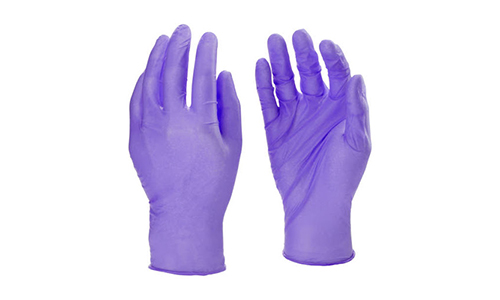
There are several considerations while using medical gloves. We will discuss some of the most critical factors to consider when donning a medical glove:
Before Putting on Medical Gloves
Wash your hands thoroughly before putting on medical gloves. Handwashing is required because bacteria or germs on the hands might transmit the infection to gloves. Therefore, it is essential to cleanse your hands before putting on gloves.
To ensure the gloves fit properly, they must be donned properly. Ensure the gloves are hand-tight prior to twisting them to fit the hand.
Additionally, it is essential to verify that the glove is totally dry prior to donning it. Ensure that the gloves are thoroughly dry prior to donning them. Dry gloves are less likely to become contaminated.
When Using Medical Glove
Ensure that the gloves are absolutely devoid of air before employing them. This is done by removing the glove and separating the fingers from the glove. Put your fingers inside the glove after removing it from your hand.
Ensure that the glove does not restrict the little finger’s movement and that it can move freely. It is essential to follow the doctor’s directions when using gloves. Instructions from the physician are crucial since they can lower the danger of infection.
After Removing Gloves
After removing the gloves, the surface should be wiped out with something like to paper towels. Additionally, you must wash your hands with soap and water. Place the gloves on the back of your hand and tighten the threads after washing them. This allows the gloves to stay on the hand and protect the hand as well as the body.
How to Choose the Best Disposable Glove Before Purchasing?
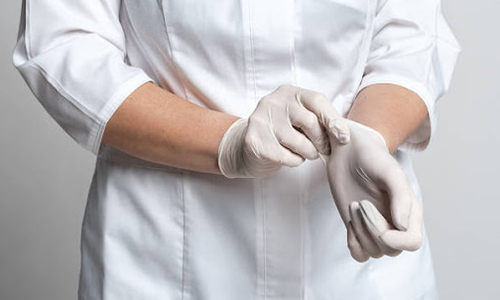
When looking for medical gloves, one of the most crucial things to keep in mind is the risks involved with the profession. Consider the dexterity requirements of the gloves, especially if they will be handling sharp or pointed things.
Additionally, you should think about how the gloves will damage your hands over time. The following information will assist you in selecting the appropriate gloves:
Powder or Powder Free Medical Gloves
You will be working with sterile surgical gloves that do not have a powder or powder-free lining if you utilize powder or powder-free medical gloves. Powder-free gloves are perfect for workers with sensitive skin or those who wish to protect themselves from dust and chemicals. To protect your hands, we recommend investing in a glue-free alternative.
Sterile vs. Non-Sterile Medical gloves
Typically, medical gloves are produced from sterile or non-sterile materials. Because non-sterile gloves are constructed of heavier materials and are thus less flexible, it is essential to determine how many you will require.
Possibility of Latex Allergy
The most prevalent material for medical gloves is latex. They are unique in that they do not include latex. Due to its comfort and breathability, it is also the most preferred glove kind.
It is crucial to remember that a small percentage of individuals are allergic to latex; therefore, it is best to rule out this possibility first. One of the most significant considerations is whether the gloves contain latex.
What Size Medical Gloves Do I Need
This is a crucial issue, particularly if the medical work involves heavy lifting. You do not want to be concerned about your hands losing circulation due to thin, maybe uncomfortable gloves. When selecting gloves, remember that the thumbs should not extend beyond the gloves.
A thumb that snaps into the palm of a quality pair of gloves prevents the gloves from falling off the hand. A range of sizes of work gloves is offered. The greater the protection a glove affords, the larger it must be.
Medical Gloves Texture
Required is a glove that can tolerate frequent use. Nevertheless, the design may compromise the durability. For instance, you should get medical nirtile examination gloves that fit snugly yet do not compromise your safety. It is also essential to locate medical gloves made of a flexible, comfortable material.
Additionally, medical gloves come in a range of materials. For instance, there are medical gloves with smooth surfaces, textured surfaces, and both smooth and textured surfaces. For example, surgical gloves usually feature a smooth and rough surface.
Color of Medical Gloves
The color of the gloves should be simple and attractive. Choose between a straightforward black and an elegant white. Consider black gloves if you will be wearing gloves for a lengthy period of time. This will aid in preventing stains. It will help facilitate glove washing by preventing bacteria and dirt from clinging to the gloves.
Choose According to Application
The gloves are a crucial element of the medical profession. The right pair of gloves can protect your hands from injuries and even infections. Medical gloves not only help protect your hands but also help prevent some medical conditions, such as skin and eye infections, from developing into serious diseases.
Medical Finishes
Polymer coating is a naturally occurring polymer resin that is flexible, soft, and durable. It is non-toxic and resistant to organic solvents, oils, and hydrocarbons from a chemical standpoint. No chemicals are utilized in the production process, and there are no hazardous consequences. It is well-suited for application in the medical, food, pharmaceutical, and electronic industries.
Glove Pinhole Rate Qualified Standard AQL
If you’re working with anything with sharp or pointy objects, then the gloves need to have a small pinhole rate. The pinhole rate helps to protect the user’s hands from the dangers of the objects they’re working with. However, the rate isn’t always black and white. It’s also important to consider the ASTM standards that your medical gloves should meet.
Chemical Resistant
Consider the chemical resistance of your gloves carefully. If they lack chemical resistance, they will be unable of withstanding the chemicals utilized on the task. It is essential to remember that chemical workers must wear supplementary protective equipment. You can either consider the chemical resistance of the gloves or include it into the task.
Glove Flexibility, Fit, Comfort
Gloves should be tight but not restrictive. They shouldn’t be so snug that they feel like a second skin, nor should they be so loose that they simply slip off. The gloves must be both flexible and comfortable. If the gloves do not fit your hands properly, they will be difficult to don and remove.
Glove Tensile Strength
Due to their function, medical gloves are created from exceptionally durable materials. Typically, the strength of a glove is measured in pounds per square inch. The longer the gloves will last while still offering adequate protection, the higher the PSI.
The best medical gloves will have high tensile strength, however not all gloves will possess this quality. The tensile strength of a glove can be measured by examining its label or by using a tensiometer. Once tensile strength has been measured, it can be compared to the tensile strengths of different gloves.
Glove Thicknesses
The greater the protection a glove provides, the thicker it must be. Sharp or pointed objects can cause cuts or wounds, so wear thicker gloves for protection. Gloves are created from a variety of materials as well. The most prevalent materials for gloves are leather and synguard vinyl exam gloves.
Before making a purchase, investigate the medical gloves’ construction materials. The vinyl coating, which can be either white or black, is a factor to consider.
Tactile Sensitivity
The user should be able to perceive the tactile feeling of the objects being handled while wearing medical gloves. For example, diabetic gloves should not be excessively stiff on the skin. Some gloves are thick and equipped with finger gauntlets to enhance tactile sense. In addition, the gloves’ material should not be too thick, and their texture should be adequate.
When the heat is turned up to a high setting, the gloves may overheat. If you operate in a very cold location, you should seek out medical disposable manufacturers from a range of materials to keep your hands warm.
Medical Gloves Material
The most effective medical gloves should be made from a nonslip, durable material. This could be a soft material such as Latex or a very tough and durable material such as Kevlar. The greatest gloves will be composed of materials that are both soft and robust. Remember that the content is the most crucial component.
Double-Gloving
Most of the time, it is not advisable to use only one pair of gloves. Since the task needs the use of both hands, it is prudent to have two pairs of gloves on hand. It is vital to evaluate the thickness and durability of both gloves while wearing double-gloved gloves. Utilize the thickest, most durable medical gloves possible.
Shelf Life of Medical Gloves
Occasionally, medical gloves have a limited shelf life. Once gloves are sold by the manufacturer, they cannot often be returned or exchanged. This necessitates the purchasing of medical gloves with a lengthy shelf-life. If you must purchase medical gloves from a medical supply store, do so in large quantities and with the goal to keep them for an extended period of time. Understanding when to replace medical gloves is essential.
Cost of Disposable Glove
Polyethylene Disposable gloves are inexpensive, but not disposable. The cost for disposable gloves can range from $5.00 to $10.00 for a pack. Disposable gloves are excellent for situations where a single set may be used.
The disposal can be an excellent option in a hospital where you need to sterilize the gloves. Plus, used disposable gloves are merely thrown away and can not be reused. Disposable gloves work well in a medical environment.
Where to Buy the Best Disposable Glove?
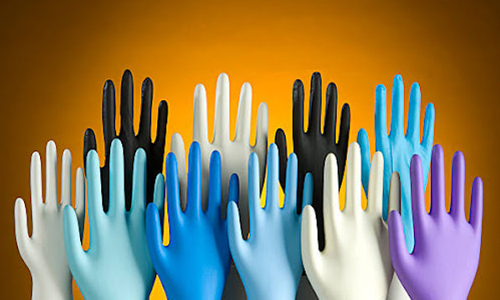
Kemei, a manufacturer of medical gloves, offers disposable gloves that keep hands clean and free of pathogens during delicate procedures. In the healthcare and medical industries, product hygiene is crucial, and we are one of the most reputable disposable medical glove manufacturers.
Available are powdered and powder-free latex and nitrile gloves. As a manufacturer of surgical hand gloves factory, our major objective is to safeguard patients through painful and delicate procedures.
The Kemei medical glove firm, which sets the benchmark for quality assurance, manufactures vast quantities of medical-grade latex medical exam gloves. Our medical gloves have acquired approval from the EU, CE, FDA, 510(K), SGS, and TUV, establishing us as a trustworthy global provider of medical gloves.
Common FAQ
How to Wear and Put Off Disposable Gloves?
There are several ways to wear and put off disposable gloves. When wearing disposable gloves, the wearer uses the thumb to form a seal around the wrist. A disposable pair of gloves is worn in the same manner as a pair of disposable plastic wear. Normally, the patient puts off the gloves by rolling these gloves on a flat surface until they are completely rolled up.
How Long Should Disposable Gloves Be Worn?
The length of time that disposable gloves are worn depends on the purpose for which they are used. In some situations, a patient may be wearing disposable gloves for several hours. In other situations, one patient’s disposable gloves may not need to be worn for longer than a few minutes. This can depend on the type of gloves and the type of patient.
When to Change Disposable Gloves?
There are several situations in which it is necessary to change disposable gloves. If a patient’s disposable gloves are soiled or stained, these are discarded. This is a sign that a health care professional needs to change the gloves.
Although these disposable gloves can be removed, it is important to change gloves as soon as either one is soiled. In some situations, disposable gloves may have become separated from the patient’s hands through separation from the garment. In these cases, the gloves can be removed immediately by the wearer.
Do Disposable Gloves Have a Shelf Life?
Disposable gloves are purchased from the manufacturer with a shelf life. This shelf life varies from product to product, but most disposable gloves have a two-year shelf life. Some gloves have a longer shelf life. Although it may be of little benefit to the wearer, the manufacturer can be contacted if there are concerns regarding the gloves’ shelf life.

